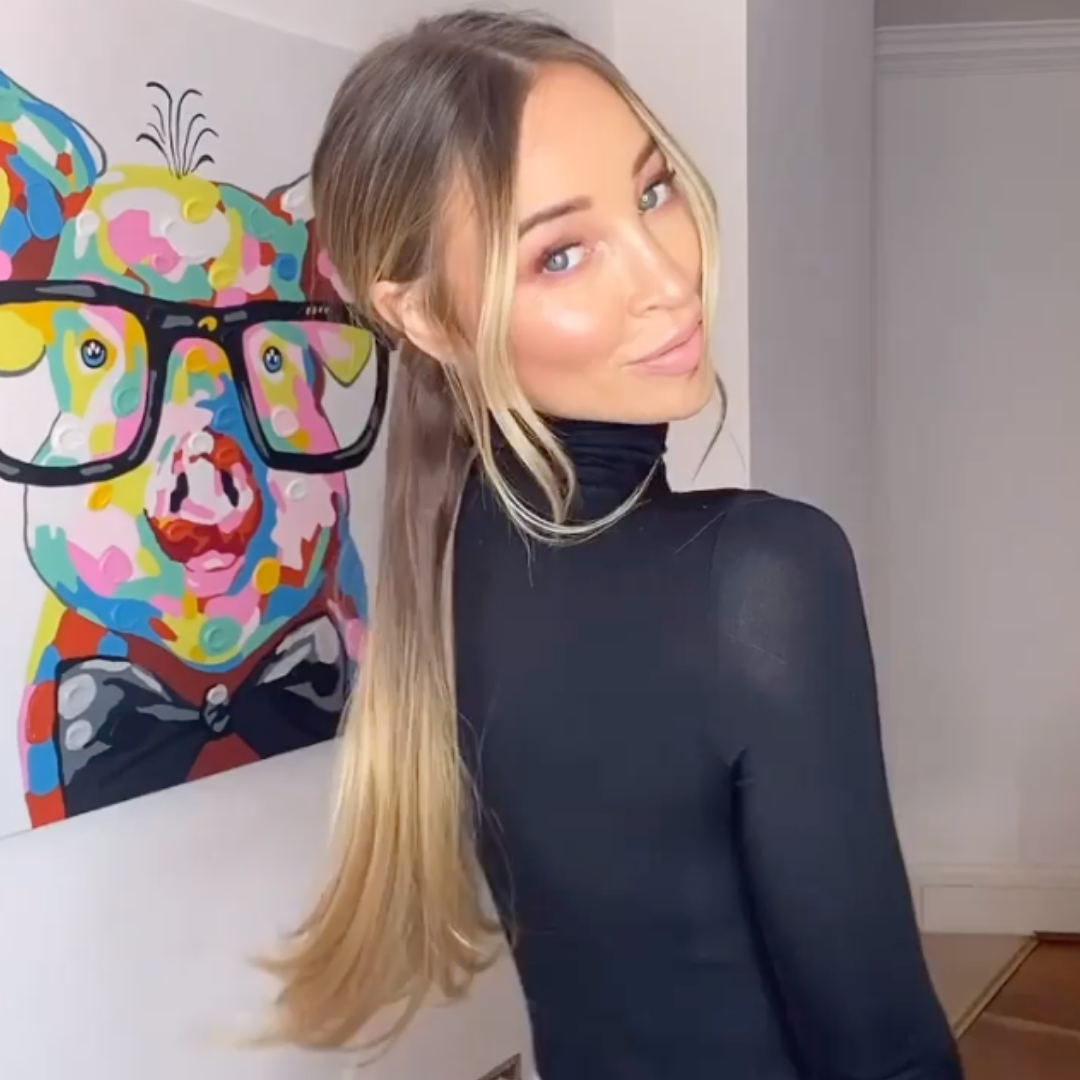The Hidden Health Dangers Of Synthetic Hair Braids For Black Women

Table of Contents
<p>Many Black women rely on synthetic hair braids for their versatility and protective qualities. However, the seemingly harmless practice of wearing synthetic hair braids can harbor significant hidden health risks. This article delves into the potential dangers associated with synthetic hair braids, offering crucial information to help Black women make informed decisions about their hair care and prioritize healthy hair practices. We'll explore the potential for hair damage, scalp infections, and other issues, empowering you to protect your beautiful hair.</p>
<h2>Traction Alopecia and Hair Loss from Tight Braiding</h2>
<h3>Understanding Traction Alopecia</h3>
Traction alopecia is a type of hair loss caused by prolonged pulling or tension on the hair follicles. Tight braiding, a common practice with synthetic hair, is a major contributor. The constant pulling weakens the hair follicles, leading to thinning and, in severe cases, permanent hair loss. This is especially concerning for Black women who often wear braids for extended periods.
<ul> <li>Continuous pulling and tension on hair follicles causes miniaturization.</li> <li>Miniaturization of hair follicles leads to visible thinning and weakening.</li> <li>Permanent hair loss can result from severe and prolonged traction alopecia.</li> <li>Symptoms include itching, scalp pain, inflammation, and noticeable hair thinning around the hairline or areas where braids are tightest.</li> </ul>
<p>The long-term effects of tight braiding can be devastating. It's crucial to understand that while temporary hair loss might seem insignificant, consistent tight braiding can result in irreversible damage. Proper braiding techniques, involving less tension and avoiding excessively tight styles, are paramount to preventing traction alopecia. Choosing a skilled braider who understands these techniques is essential for minimizing the risk.</p>
<h2>Scalp Infections and Irritation from Synthetic Hair Braids</h2>
<h3>Bacteria and Fungi Growth</h3>
Synthetic hair braids, particularly those worn for extended periods, can create a breeding ground for bacteria and fungi. The synthetic fibers trap moisture, sweat, and dead skin cells, providing the perfect environment for microbial growth. This can lead to various scalp infections and irritation.
<ul> <li>Folliculitis, an inflammation of the hair follicles, is a common result.</li> <li>Scalp infections, such as tinea capitis (ringworm), can occur.</li> <li>Open wounds or cuts during braiding increase the risk of infection.</li> <li>Symptoms of scalp infections include itching, redness, pus formation, and scaling of the scalp.</li> </ul>
<p>Maintaining excellent scalp hygiene is crucial when wearing synthetic braids. Regular cleansing with a gentle, sulfate-free shampoo and ensuring the scalp remains dry and well-ventilated are vital steps in preventing infections. Avoid scratching the scalp, which can introduce more bacteria and worsen infections. If you notice any signs of infection, seek medical attention promptly.</p>
<h2>Allergic Reactions and Chemical Sensitivity</h2>
<h3>Harmful Chemicals in Synthetic Hair</h3>
Synthetic hair often contains various chemicals used in manufacturing, some of which can trigger allergic reactions. These chemicals include preservatives like formaldehyde, dyes, and colorants.
<ul> <li>Formaldehyde and other preservatives are used to extend the shelf life of synthetic hair.</li> <li>Dyes and colorants provide the wide range of colors available.</li> <li>Reactions can range from mild irritation to severe allergic contact dermatitis.</li> <li>Symptoms include rashes, itching, swelling, and a burning sensation on the scalp and surrounding skin.</li> </ul>
<p>To minimize the risk of allergic reactions, opt for high-quality synthetic hair from reputable brands that prioritize the use of hypoallergenic materials. Before applying any synthetic hair, perform a patch test on a small area of skin to check for any adverse reactions. If you experience any allergic symptoms, discontinue use immediately and consult a dermatologist.</p>
<h2>Hair Breakage and Damage from Synthetic Braids</h2>
<h3>The Impact of Weight and Tension</h3>
The weight and tightness of synthetic braids significantly contribute to hair breakage and damage. The added weight puts extra stress on the hair follicles, while tight braiding causes friction and breakage along the hair shaft.
<ul> <li>Increased risk of breakage at the roots and along the hair shaft.</li> <li>Damage to the hair cuticle, leading to dryness, frizziness, and split ends.</li> <li>Difficulty removing braids without causing further damage.</li> </ul>
<p>To minimize breakage, choose braid sizes appropriate for your hair type and thickness. Avoid excessively tight braiding, and use gentle detangling methods when removing the braids. Regular deep conditioning treatments can help strengthen your hair and reduce breakage. Consider using protective hair oils to minimize friction and maintain moisture.</p>
<h2>Maintaining Healthy Hair While Wearing Synthetic Braids</h2>
<h3>Preventive Measures and Best Practices</h3>
Even with awareness of the risks, many Black women still choose to wear synthetic braids. The key is to minimize the risks through careful selection and maintenance.
<ul> <li>Choose high-quality, breathable synthetic hair from reputable brands.</li> <li>Opt for proper braiding techniques; avoid excessively tight braids.</li> <li>Practice regular scalp cleansing and moisturizing using gentle products.</li> <li>Take breaks from wearing synthetic braids to allow your scalp and hair to recover.</li> <li>Use protective hair oils and conditioners to maintain moisture and minimize breakage.</li> </ul>
<p>By following these guidelines, you can significantly reduce the risk of hair damage and scalp problems. Remember, regular scalp checks and professional consultations are crucial for maintaining healthy hair under synthetic braids.</p>
<h2>Conclusion</h2>
Synthetic hair braids, while offering style and convenience, present several potential health risks for Black women. Traction alopecia, scalp infections, allergic reactions, and hair breakage are all serious concerns. However, by making informed choices about the type of hair used, employing proper braiding techniques, prioritizing scalp hygiene, and taking regular breaks, you can significantly minimize these risks. Prioritize your hair health and choose wisely when considering synthetic hair braids. Don't hesitate to consult a dermatologist or trichologist if you experience any concerning symptoms. Remember, healthy hair is beautiful hair!

Featured Posts
-
 Post Venice Film Shoot Ashton Kutcher And Mila Kunis Enjoy Beverly Hills Outing
May 27, 2025
Post Venice Film Shoot Ashton Kutcher And Mila Kunis Enjoy Beverly Hills Outing
May 27, 2025 -
 Ecb Den Tarifelere Yoenelik Ciddi Uyari Etkileri Ve Tepkiler
May 27, 2025
Ecb Den Tarifelere Yoenelik Ciddi Uyari Etkileri Ve Tepkiler
May 27, 2025 -
 Is Nora Fatehi Dissing Rasha Thadanis Pr Agency Reddit Weighs In On The Uyi Amma Girl Comment
May 27, 2025
Is Nora Fatehi Dissing Rasha Thadanis Pr Agency Reddit Weighs In On The Uyi Amma Girl Comment
May 27, 2025 -
 The Nora Fatehi Rasha Thadani Pr Agency Feud Analyzing The 100 Noras Comment On Reddit
May 27, 2025
The Nora Fatehi Rasha Thadani Pr Agency Feud Analyzing The 100 Noras Comment On Reddit
May 27, 2025 -
 Kai Cenat And I Show Speed A Net Worth Analysis For 2025
May 27, 2025
Kai Cenat And I Show Speed A Net Worth Analysis For 2025
May 27, 2025
Latest Posts
-
 Zverevs Indian Wells Campaign Ends Early Griekspoor Upsets Top Seed
May 31, 2025
Zverevs Indian Wells Campaign Ends Early Griekspoor Upsets Top Seed
May 31, 2025 -
 Indian Wells Surprise Griekspoor Defeats Top Seeded Zverev
May 31, 2025
Indian Wells Surprise Griekspoor Defeats Top Seeded Zverev
May 31, 2025 -
 Shelton And Cerundolo Join Zverev In Munich Semifinals
May 31, 2025
Shelton And Cerundolo Join Zverev In Munich Semifinals
May 31, 2025 -
 Zverevs Indian Wells Campaign Ends In Upset Loss To Griekspoor
May 31, 2025
Zverevs Indian Wells Campaign Ends In Upset Loss To Griekspoor
May 31, 2025 -
 Top Seed Zverev Loses To Griekspoor At Indian Wells
May 31, 2025
Top Seed Zverev Loses To Griekspoor At Indian Wells
May 31, 2025
